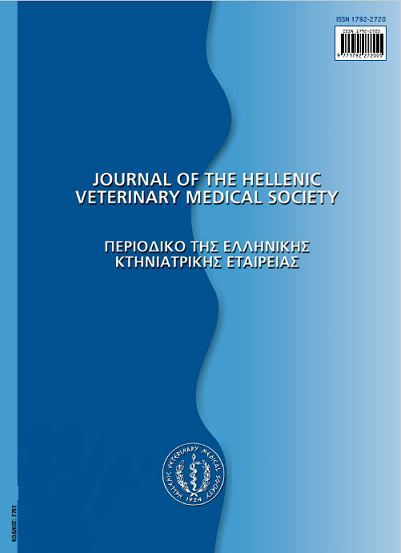Laboratory investigation of adult small ruminant Leptospirosis, a neglected infection in Greece: problems and recommendations

Abstract
Leptospirosis is in Greece a neglected infection. Small ruminants and specifically sheep are accidental hosts of Leptospira spp, but they could also be disseminators of pathogenic serovars. Thus, the objective was to investigate leptospirosis of adult small ruminants coming from areas in Southern Greece, where accidental evidence had showed that leptospirosis could be an important infection for man and animals. For this purpose, blood and kidney samples were collected at slaughter from adult females. Collected samples were examined with a commercial serological screening kit, the microagglutination test ( MAT), histology and PCR. One hundred ten serum and 110 tissue samples were collected. Of the examined serum samples 55 (50%) were suspect for leptospirosis in the screening kit and 28 (25.45%) were MAT positive. Of the tissue samples 38 (34.5%) were PCR positive and 30 (27.2%) showed various degrees of microscopic kidney lesions. The serovars identified by the MAT were Tarassovi (10 animals), Autumnalis (8 animals), Zanoni (4 animals), Hebdomadis and Javanica (2 each), Bratislava and Hardjio prajitno (one each). The conclusion is that small ruminants and specifically sheep (98 animals) are disseminators of pathogenic Leptospira spp. serovars in areas where they predominate and climatic factors favor the survival of the pathogen.
Article Details
- How to Cite
-
BISIAS (Α.Γ. ΜΠΙΣΙΑΣ) A. G., KRITAS (Κ.Σ. ΚΡΗΤΑΣ) C. S., BILLINIS (Χ. ΜΠΙΛΛΙΝΗΣ) C. H., & BURRIEL, R. A. (2018). Laboratory investigation of adult small ruminant Leptospirosis, a neglected infection in Greece: problems and recommendations. Journal of the Hellenic Veterinary Medical Society, 66(4), 223–230. https://doi.org/10.12681/jhvms.15866
- Issue
- Vol. 66 No. 4 (2015)
- Section
- Research Articles

This work is licensed under a Creative Commons Attribution-NonCommercial 4.0 International License.
Authors who publish with this journal agree to the following terms:
· Authors retain copyright and grant the journal right of first publication with the work simultaneously licensed under a Creative Commons Attribution Non-Commercial License that allows others to share the work with an acknowledgement of the work's authorship and initial publication in this journal.
· Authors are able to enter into separate, additional contractual arrangements for the non-exclusive distribution of the journal's published version of the work (e.g. post it to an institutional repository or publish it in a book), with an acknowledgement of its initial publication in this journal.
· Authors are permitted and encouraged to post their work online (preferably in institutional repositories or on their website) prior to and during the submission process, as it can lead to productive exchanges, as well as earlier and greater citation of published work.


